PARTS UNKNOWN
North American skiers and riders traveling to Japan for its iconic deep “Japow” powder in recent years likely headed to Hakuba Valley (part of Epic Pass) or Niseko United in Hokkaido (on the Ikon pass). But Indy Pass members also have their own options, in tune with the Indy way: lesser known ski areas where your ticket may still be printed out, there is one lodge, ample parking, and no lift lines.
In February, SAM traveled to Japan with Indy Pass founder Doug Fish and members of the media to visit his relatively new additions to the pass (August 2021) in the Tohoku region of northeast Honshu, the main island of Japan: Geto Kogen; Aomori Spring; Okunakayama Kogen; Shimokura/Pandora; and Tazawako.
The Tohoku region remains largely undiscovered by Westerners. Though off the beaten path, the resorts here serve up the same Japow and endless freshies as their more renowned neighbors, along with a traditional Japanese experience from the food to the accommodations.
At most of the areas we visited, there were very few (and sometimes none at all) English-speaking patrons. It made for a deeply immersive experience, blending culture and skiing. We felt like true adventurers, traveling like TV travel host Anthony Bourdain to “parts unknown.”
Tourism experts say this is the type of travel experience people are seeking (see “Selling Summer” on p. 48), so Fish was smart to partner with Brent Potter and Luke Cummings of Japan Ski Tours to package all five Indy member resorts into one all-inclusive 8- to 10-day tour. The adventure includes powder seeking in the sidecountry and trees, plus the option for guided backcountry and cat skiing, traditional Japanese food and accommodations (shoes were not allowed in rooms; beds are on tatami mats), hot baths known as onsens (where clothes are strictly forbidden), and plenty of sake.
Japan’s ski industry, like other ski markets around the world, is going through a transition post-Covid, but it seems poised for growth, and the relatively undisturbed Tohoku region is ripe with opportunity.
The Japanese ski industry has a bumpy history. Following the 1972 Winter Olympics in Sapporo, skiing saw explosive growth that peaked in the ’90s. As the 1998 Nagano Winter Olympics approached, 18.6 million people—one out of every seven Japanese—said they skied or rode; annual visits neared 90 million. Japan had in the neighborhood of 7oo ski areas.
But Japan’s economic bubble burst, and the ski industry entered a decades-long decline due to an aging population, recession, and climate change impacts on the many areas at relatively low altitudes, less than 3,000 feet. Today, Japan’s ski population is between 4 and 5 million, and there are approximately 475 resorts.
However, things are looking up. Prior to Covid, Japan’s international ski market was growing, and big operations like Niseko United and Hakuba Valley spent millions to expand their services. Most recently, Niseko’s Hanazono Resort spent $500 million on a hotel, Poma gondola, and 6-seater heated bubble lift.
After Japan’s borders reopened in October 2022 following pandemic related closures, there has been a steady stream of international skiers and snowboarders, beating even pre-Covid numbers.
Will that boost reach Japan’s small- and mid-sized independent ski areas, which make up two-thirds of the 400+ ski areas in the country?
Perhaps they can learn from the success of the Indy Pass in the U.S., where Fish and his partner Nate Parr observed a gap in the market and created a product for casual or occasional participants that helped skiers and riders rediscover local hills and spurred renewed interest in independent areas. Impetus for growth could also come from hosting the Olympics again; there is talk of Sapporo for 2030.
If Japan’s independent resorts are to replicate the success of their North American counterparts, they’ll likely need to modernize. Most of the current lift and building infrastructure, while part of the charm, has not been updated since the late ’80s. Upgrades are needed, along with diversification to attract more year-round and/or international visitors.
Some suggest foreign investments will need to drive the changes. “The Japanese pursue social harmony over money,” Hanazono Niseko president Colin Hackworth told SAM. “There is little [local] incentive to make changes.”
Global competition is steep, with more resort groups expanding and investing internationally through their passes and acquisitions. But the market is there. “When China fully opens, that is going to be a game changer for global ski destinations,” said Hackworth. “The Chinese government is aiming for 300-million-plus snowsports participants, and many are going to want to travel to international resorts.”
With the race to update, expand, and grow heating up, hopefully Japan heeds the lessons of its past—both the financial problems that followed the initial boom, and the issues that arise everywhere when resorts grow fast and alienate their local communities and workforce.
 Left: Five resorts in Tohoku, the northern part of Honshu island, are on the Indy Pass and part of a new Japan Ski Tours travel package. Center: Indy Pass founder Doug Fish and wife, Michelle, in the traditional Japanese robes provided at each hotel, which guests often wear to dinner after a visit to the onsen (hot spring baths). Right: SAM publisher Olivia Rowan and Granite Peak GM Greg Fisher are all smiles on a guided backcountry tour through untouched “Japow.”
Left: Five resorts in Tohoku, the northern part of Honshu island, are on the Indy Pass and part of a new Japan Ski Tours travel package. Center: Indy Pass founder Doug Fish and wife, Michelle, in the traditional Japanese robes provided at each hotel, which guests often wear to dinner after a visit to the onsen (hot spring baths). Right: SAM publisher Olivia Rowan and Granite Peak GM Greg Fisher are all smiles on a guided backcountry tour through untouched “Japow.”
 Left to right: For a seamless ticket redemption process, Indy Pass holders provide their name and birthdate at the ticket window to receive a paper ticket, and the Entabeni Systems software used by Indy sends a welcome message and receipt immediately to the passholder. Fresh powder tracks are plentiful in this region, thanks to low skier numbers and nearly constant snowfall. Lunch options in Tohoku are traditional and delicious, ranging from ramen and udon to curries, and food is purchased through old-school vending machines, which produce tickets for the kitchen where everything is made to order. Onsens (natural hot baths) are everywhere, steeped in tradition and etiquette ... and a nice way to end a powder day.
Left to right: For a seamless ticket redemption process, Indy Pass holders provide their name and birthdate at the ticket window to receive a paper ticket, and the Entabeni Systems software used by Indy sends a welcome message and receipt immediately to the passholder. Fresh powder tracks are plentiful in this region, thanks to low skier numbers and nearly constant snowfall. Lunch options in Tohoku are traditional and delicious, ranging from ramen and udon to curries, and food is purchased through old-school vending machines, which produce tickets for the kitchen where everything is made to order. Onsens (natural hot baths) are everywhere, steeped in tradition and etiquette ... and a nice way to end a powder day.
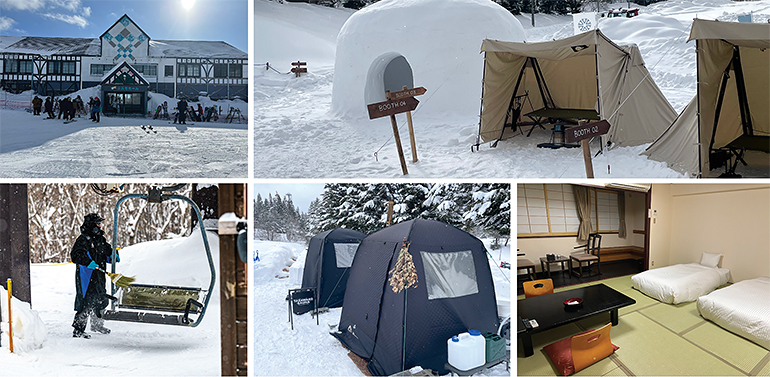 Top left: The charming base lodge at Okunakayama Resort. Bottom left: Lift attendants have an array of brooms for clearing snow from lifts, many of which in this region are fixed-grips from the ’90s. Center column: Tazawako Resort offers a snow play area complete with igloos and glamping tents where patrons can rent a fire pit and food items like s’mores; tented on-snow saunas at Tazawako offer a traditional Finnish hot and cold therapy experience. Below: Tatami mats line the floors of the traditional Japanese hotels we visited.
Top left: The charming base lodge at Okunakayama Resort. Bottom left: Lift attendants have an array of brooms for clearing snow from lifts, many of which in this region are fixed-grips from the ’90s. Center column: Tazawako Resort offers a snow play area complete with igloos and glamping tents where patrons can rent a fire pit and food items like s’mores; tented on-snow saunas at Tazawako offer a traditional Finnish hot and cold therapy experience. Below: Tatami mats line the floors of the traditional Japanese hotels we visited.
TAKE MY GEAR, PLEASE
With much of the winter sports industry focusing on high-end products and luxury experiences, the new Sendy sharing and sales app takes the opposite approach. It’s an online marketplace for selling and renting used adventure sport gear, primarily among individuals. Skiing and snowboarding are key markets, as are mountain biking, climbing, and other active sports. Most of the gear is listed for sale, but the for-rent option could become an especially effective way for skiers and riders to explore new gear and activities.
The aim, say the creators, is to get more people outside by making gear accessible and inexpensive. The app launched in mid-November, so it doesn’t have a long history. As of mid-February, most of the items listed were offered for sale, not rent. But among the for-rent items, and drawing the most interest, were avy vests, splitboards, ski bikes, alpine touring skis, and other items that folks might not use often enough to justify a purchase, but which are essential for new and unusual experiences.
Will it achieve the critical mass needed to become a one-stop shop for anything a skier or rider might need? Stranger things have happened.
ADVENTURE PARK INSIDER ATTENDS ACCT
Spring is in the air. While for many of you that means continued winter operations, it’s also the time to start thinking about summer ops. To that end, the SAM team headed to the Association for Challenge Course Technology’s (ACCT) annual international conference and tradeshow in mid-February for our sister publication, Adventure Park Insider, to gather insights about what’s on tap and on trend in the aerial adventure world.
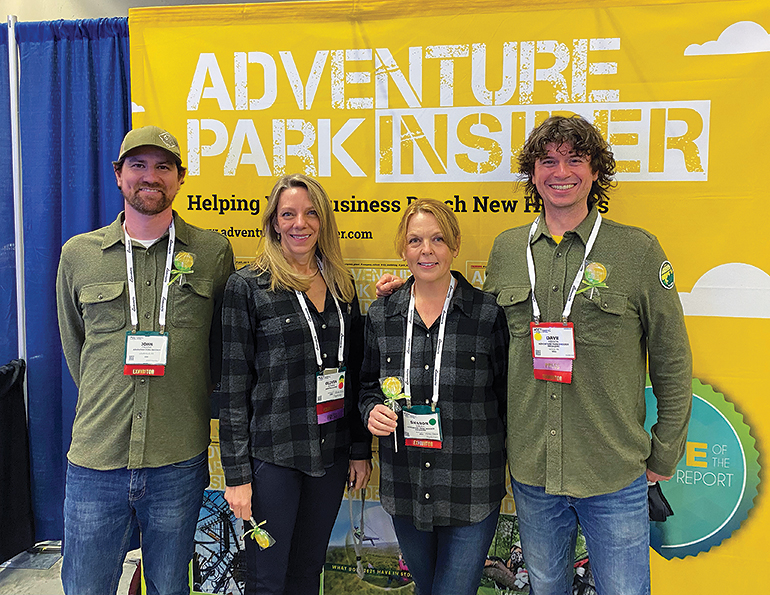
The ACCT conference brought together roughly 800 aerial adventure operators, builders, experts and vendors. Several trends and challenges emerged.
As with the snowsports industry, staffing, wages, and workforce housing are, as they have been for several years, pressing concerns for aerial adventure operators. With staffing challenges come questions about how to optimize (and standardize) training and reduce incidents for both employees and guests.
Perhaps not surprisingly, zip line incidents account for the majority of instances that lead to lawsuits, with operator error the most commonly alleged cause. Average claim payouts are rising rapidly, thanks to social inflation (juries awarding larger payouts) and real inflation. The resulting pressure on insurance policies and premiums is real.
Sound familiar?
The aerial adventure industry is much younger than winter sports—the earliest recreational zip lines went up around 2001—and is going through growing pains similar to those endured by the snowsports industry through its first decades of development. Calls for more uniform aerial adventure regulations across the country are growing louder, though some states still have no regulations of any sort.
Amid all the increasing red tape, some wonder how the guest experience will fare, and how small operators and vendors will adapt.
We’ll dive into these topics and more in upcoming issues of API. If you run a summer adventure park operation or are interested in how others in the tourism sector are tackling similar challenges, check us out at www.adventureparkinsider.com or email jack@adventureparkinsider.com to get on the subscription list.
SUPPLIER NEWS
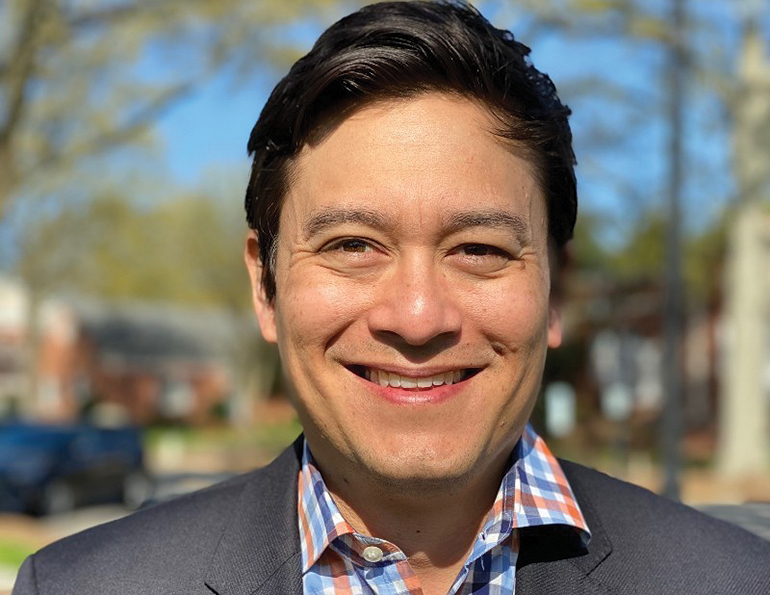 Jim Bryan-KandaJim Bryan-Kanda has joined PARADOCS MOUNTAIN SOFTWARE as business development manager. Bryan-Kanda will be responsible for expanding the Paradocs business in the United States.
Jim Bryan-KandaJim Bryan-Kanda has joined PARADOCS MOUNTAIN SOFTWARE as business development manager. Bryan-Kanda will be responsible for expanding the Paradocs business in the United States.
SNOW PARTNERS appointed Dave Belin as its new CFO for all its related businesses. Prior to joining SNOW Partners, Belin was the director of consulting services at RRC Associates, a research and strategy firm in Boulder, Colo.
The company has also acquired a controlling interest in the ski bike manufacturer SNO-GO.
Johannes Wiedorfer has been promoted to the head of marketing for surface lift and leisure activity supplier SUNKID.
Aurélien Bône joined MND GROUP as director of sales, communication, and marketing, and Mehdi Caillis joined the group as director of urban transport and public affairs.
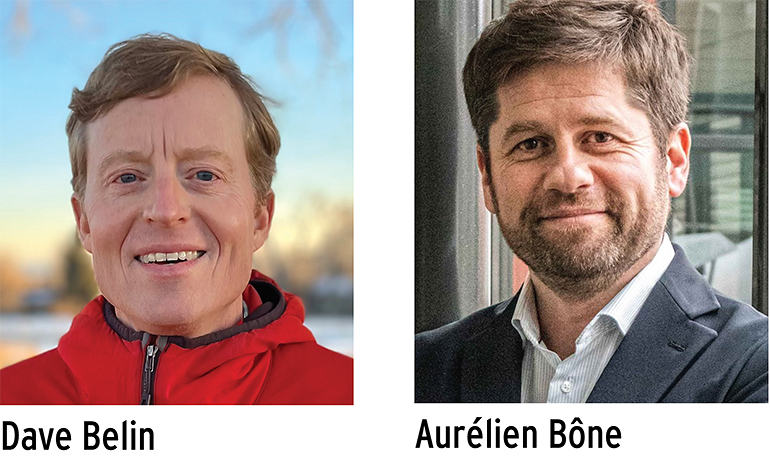
PEOPLE
In the East, Bonnie MacPherson joined Gunstock Mountain Resort, N.H., as marketing director. … Wisp Resort, Md., hired Tom Royther as its sustainability coordinator.
Vail Resorts promoted Courtney DiFiore to senior communications manager for the Northeast region, and Kendra Nichols was hired as the new communications manager for the Mid-Atlantic.
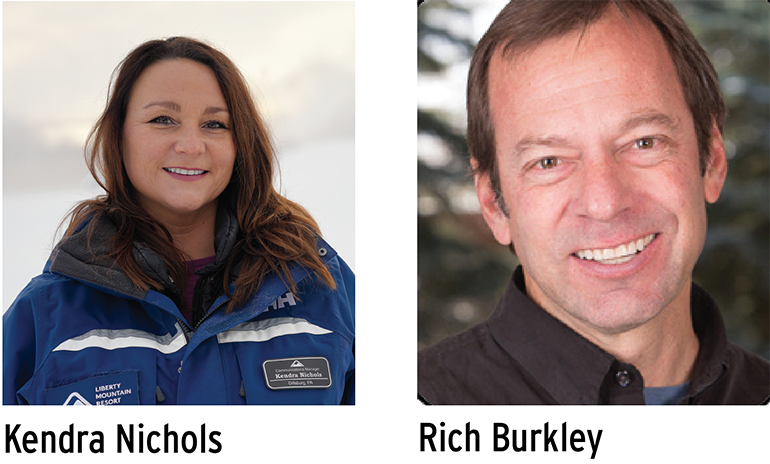
In the West, Dean Parkinson was promoted to general manager of Castle Mountain Resort, Alberta. … Rich Burkley joined Lake Louise Ski Resort, Alberta, as CEO.
Maggie Loring joined Solitude Mountain Resort, Utah, as the new snowsports school training manager. … Aspen Skiing Co. promoted Alinio Azevedo to CEO of its hospitality division, Aspen Hospitality.
Arapahoe Basin, Colo., elevated Jesse True to VP of marketing and skier services, Maggie Murray is now VP of finance, and Tony Cammarata was named director of development and planning,
The Professional Ski Instructors of America and American Association of Snowboard Instructors (PSIA-AASI) named industry veteran Peggy Hiller as its new CEO. … Melody Nester has joined Ski New Hampshire as the association’s new assistant director.
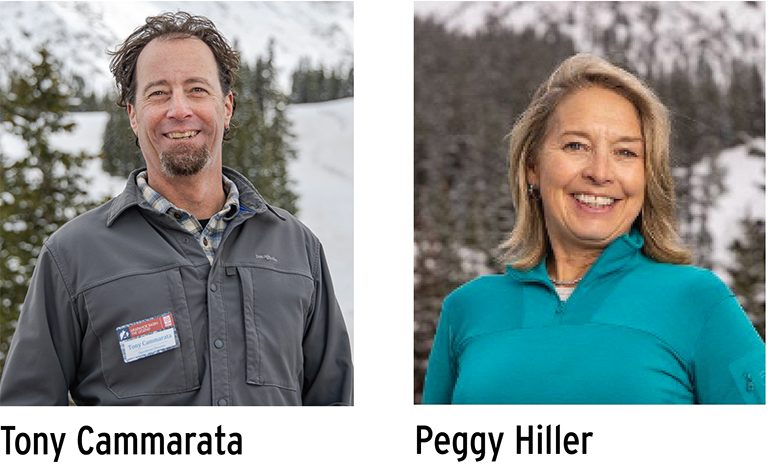
AWARDS
Belleayre Mountain, N.Y., won the 2023 “I Am a Snowmaker” contest, sponsored by HKD Snowmakers. More than 12,000 total votes were cast for the seven resort snowmaking teams in the contest.
The winners of the 2022 SAM Terrain Park Contest were: Snow Park, Bear Creek, Pa. (Feature); Bomb Hole, Brighton, Utah (Event); Woodward Eldora Spring 2021, Eldora, Colo. (Park Edit); and Woodward Killington, Killington, Vt. (Park Crew).
Shannon Dunn-Downing and Tina Basich were the first female snowboard athletes inducted into the U.S. Ski and Snowboard Hall of Fame. Basich and Dunn-Downing were recognized as role models and for their work promoting female snowboarders across the industry.
OBITUARIES
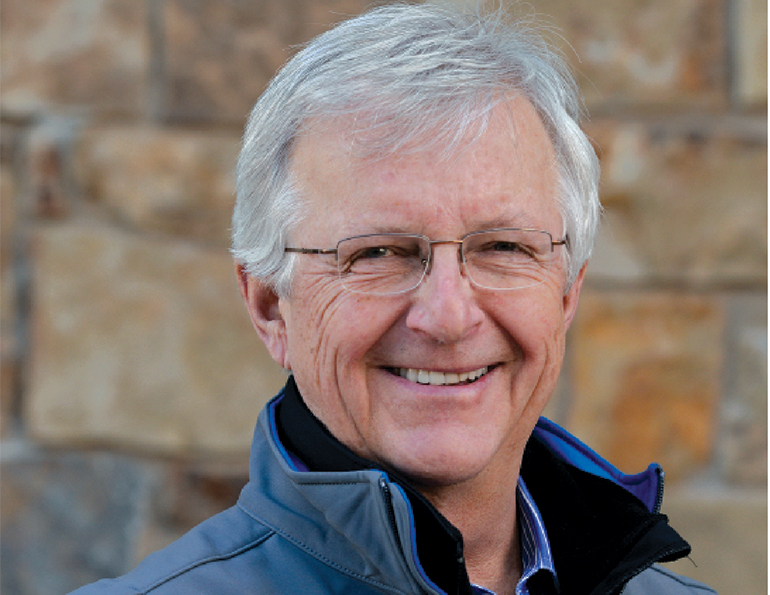 Former Steamboat Ski Resort president and author of seminal industry text Ski Inc., Chris Diamond, died Jan. 12, 2023, from pancreatic cancer. He was 76. Over 45 years in the industry, he led operations at several resorts, served as a consultant, and published two important books on the evolution of the snowsports industry. He was also a past chairman of the National Ski Areas Association (NSAA) and the 2013 recipient of the NSAA Lifetime Achievement Award.
Former Steamboat Ski Resort president and author of seminal industry text Ski Inc., Chris Diamond, died Jan. 12, 2023, from pancreatic cancer. He was 76. Over 45 years in the industry, he led operations at several resorts, served as a consultant, and published two important books on the evolution of the snowsports industry. He was also a past chairman of the National Ski Areas Association (NSAA) and the 2013 recipient of the NSAA Lifetime Achievement Award.
Amy Allison Steele died Jan. 19, 2023, at 67. Steele spent years in the association business, first with the International Racquet & Sportsclub Association and later with the National Ski Areas Association as director of sponsorships.
John Everett Kircher, former Big Sky Resort GM, died Jan. 28, 2023, after a battle with cancer. He was 64. Growing up in the base lodge of Boyne Mountain, Mich., Kircher went on to manage four ski areas under Boyne Resorts and become president of western operations. He was responsible for bringing the Lone Peak Tram to Big Sky in 1995, and the first 8-passenger gondola to Washington state at Crystal Mountain.
Hans Burkhart, builder of many of the “first,” “longest,” and “largest” lifts of their time, died in early February 2023. Originally from Germany, Burkhart began teaching skiing at Aspen Highlands in 1959 before moving into lift construction. He was responsible for the construction of pioneering lift projects like the Palisades Tahoe aerial tramway in 1968 and the Snowbird tram in 1971.






